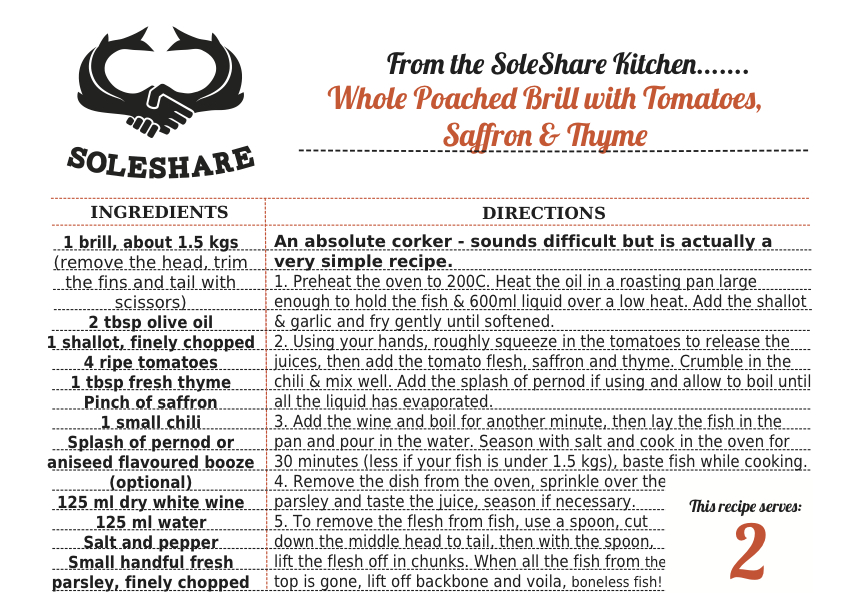G is for Gurrrrnard...
Welcome back fish fans! This weeks blog is brought to you by the letter 'G'. Introducing one of our fave bottom dwellers.... the Gurnard!
We think Gurnards are downright funky. Not only do they growl (true story!), but they’ve got an incredible set of wing like fins that they use to maneuver the sea floor. They belong to a group of fish known as the Triglidae (sea robins) family. These guys grow quickly and reach sexual maturity relatively early in life.
Gurnards are a non-quota species, which means they are often discarded due to low market demand. By choosing to eat gurnard, we can help to alleviate the wasteful practice of discarding at sea. We hope to see more research and interest in this species in the coming years. One bizarre thing we do know is that they grunt & growl in the deep! They do it with the help of muscles associated with their swim bladder, and it’s believed they get their grunt on to keep schools tight during the spawning period. Grrrr!
With the help of Rick Stein, here’s how we chefed up our Gurnard this week:
The sea brought us another quirky beast this week too, the mighty huss. Huss is a generic term for a number of species of catshark of the genus mustelus. They’re caught as bycatch in demersal fisheries (i.e. when fishermen are targeting soles). Catches shoot up after storms, as they move in to feed on any bits and pieces washed around in the turbulent waters. We also noticed increased catches in areas with lots of whelk pots, but that’s certainly not backed up by firm evidence.
We used to shy away from eating elasmobranchs (cartilaginous fish like sharks and rays), as they’re called k selected species. This means they mature slowly and only give birth to a small number of offspring, however, numbers in the Eastern channel seem plentiful. Also, these species are caught by accident and I’d much rather they got eaten by people than turned into cat food.
They’re usually skinned on the boat by fishermen- which saves us a pretty hefty task! This means the hunk of fish you get still has a spine running through the middle. However, this is pretty easy to remove. Just pare it from the flesh with a sharp knife. Also, if you bake it whole, the backbone slides away from the flesh very easily and as it’s a cartilaginous fish, there aren’t any small bones to choke on.
They’ve got a firm, meaty texture and stand up really well in a Goan fish curry.
Or if you fancy something a bit more Mediterranean, try this.
Baked huss with a pesto and parmesan crust.
500g Huss, skinned
Pesto
A handful of fresh breadcrumbs
Fresh tomatoes (large ones quartered, small ones halved)
A handful of finely grated parmesan (the powdered stuff in a plastic pot WILL NOT DO- throw it in the bin)
A small bunch of fresh parsley, finely chopped (optional)
Olive oil
Rinse your huss (bone in) under a running tap and pat dry with kitchen towel.
Place it in a roasting dish and arrange the tomatoes around the fish.
Season well with salt and pepper.
Spread a layer of pesto on your huss.
Scatter the breadcrumbs (and parsley, if using) on top
Season and drizzle with olive oil.
Scatter over the parmesan.
Place in a hot oven (200ºC) for 20 minutes. Check the fish by inserting a knife at the thickest part of the fish, when it pulls away from the spine easily, serve it up.
A simply dressed salad of bitter leaves would work well here, maybe some new potatoes too.
Here's another beauty that Ken and Joe brought us last week. The brilliant Brill!
And a couple more recipes of the week featuring Ken and Joe's catch of the day:
Have a delicious week! Sea you back here next time.



